





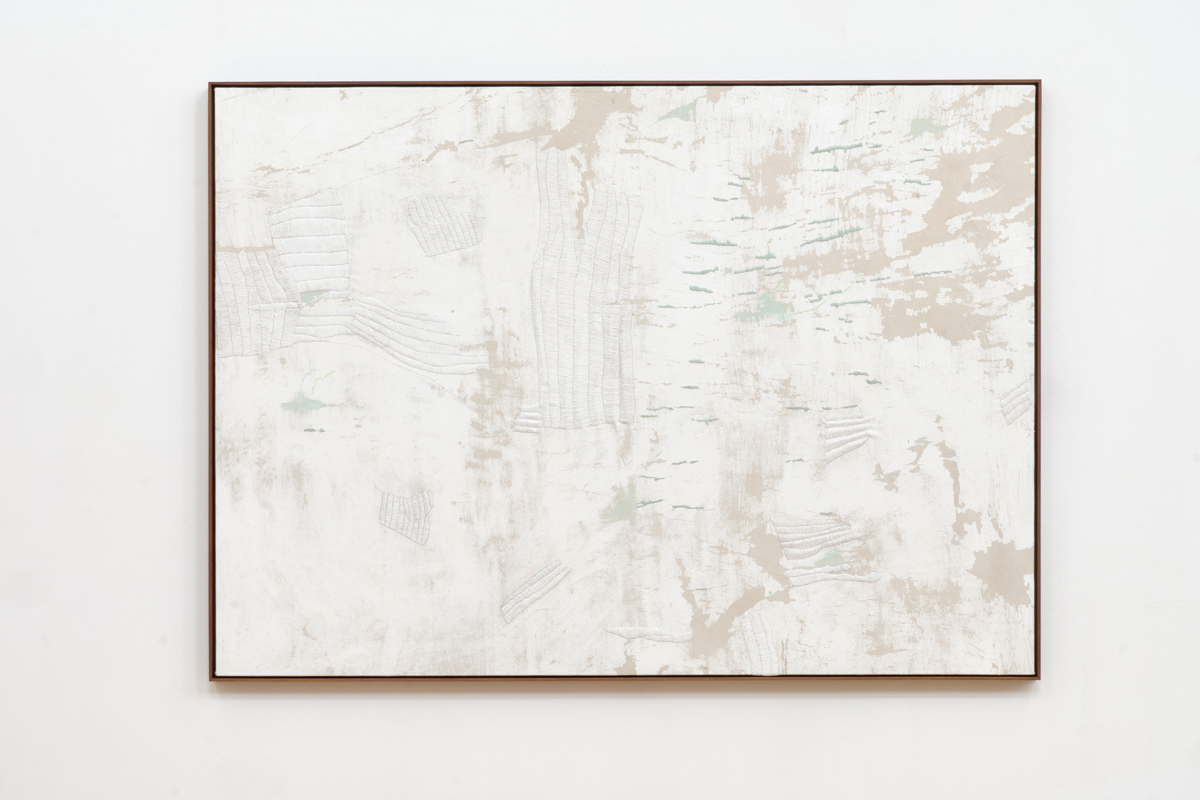





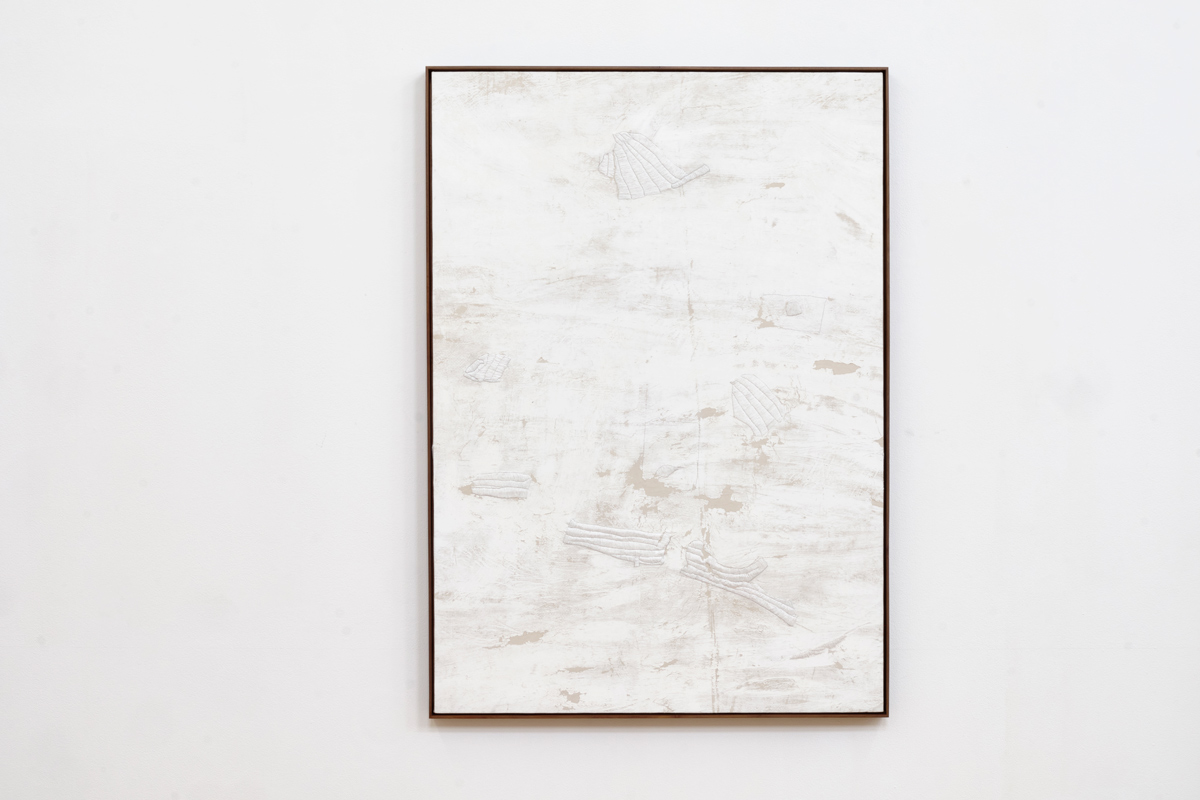


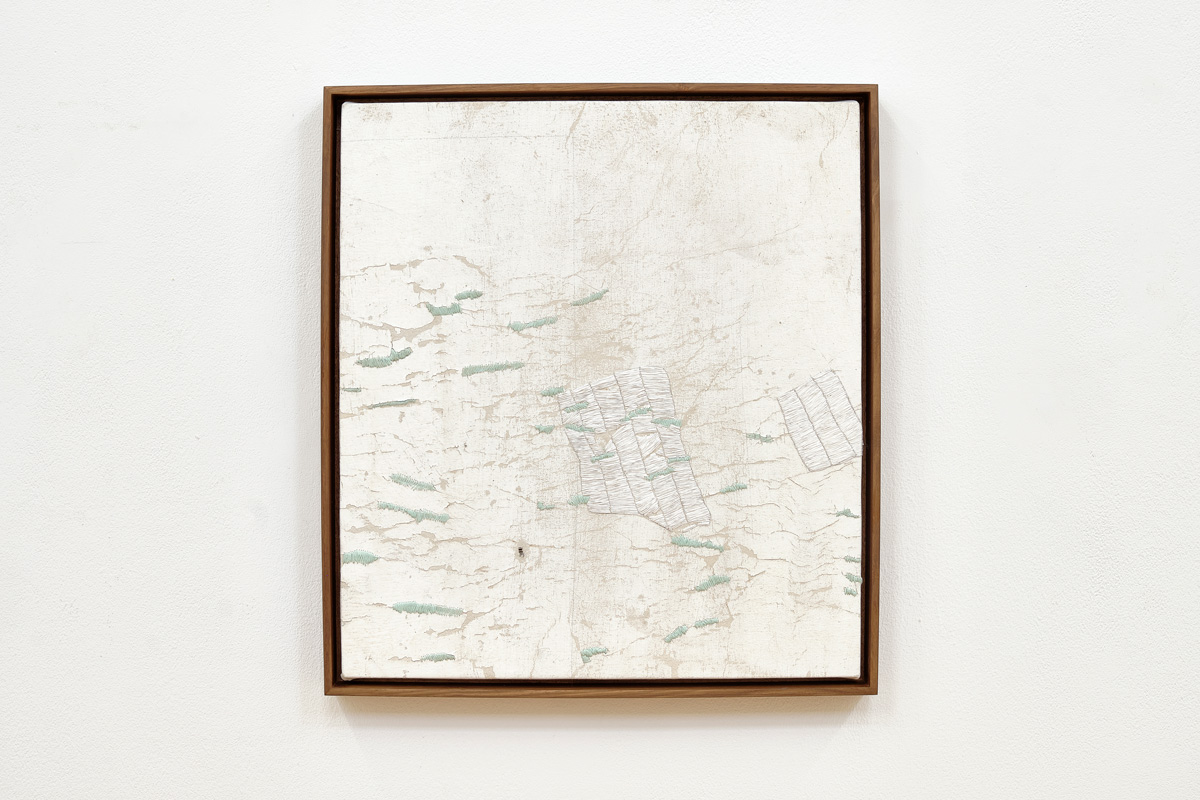
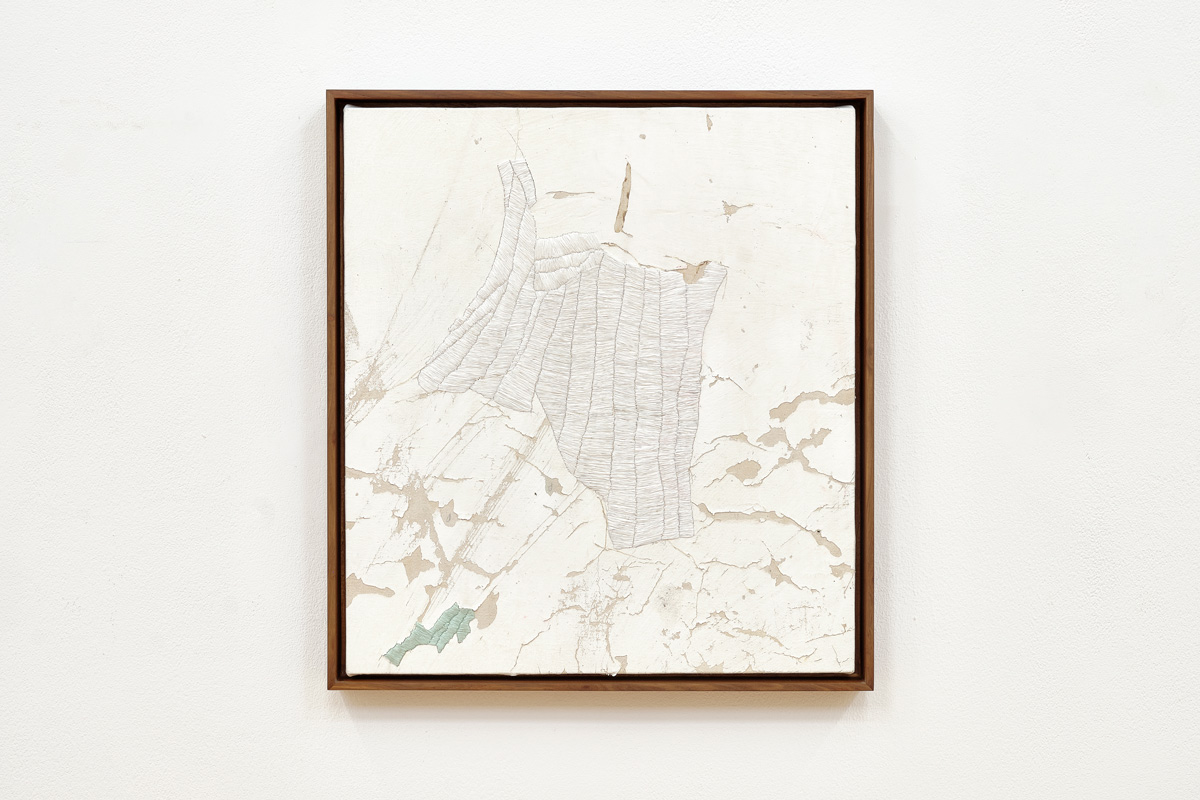
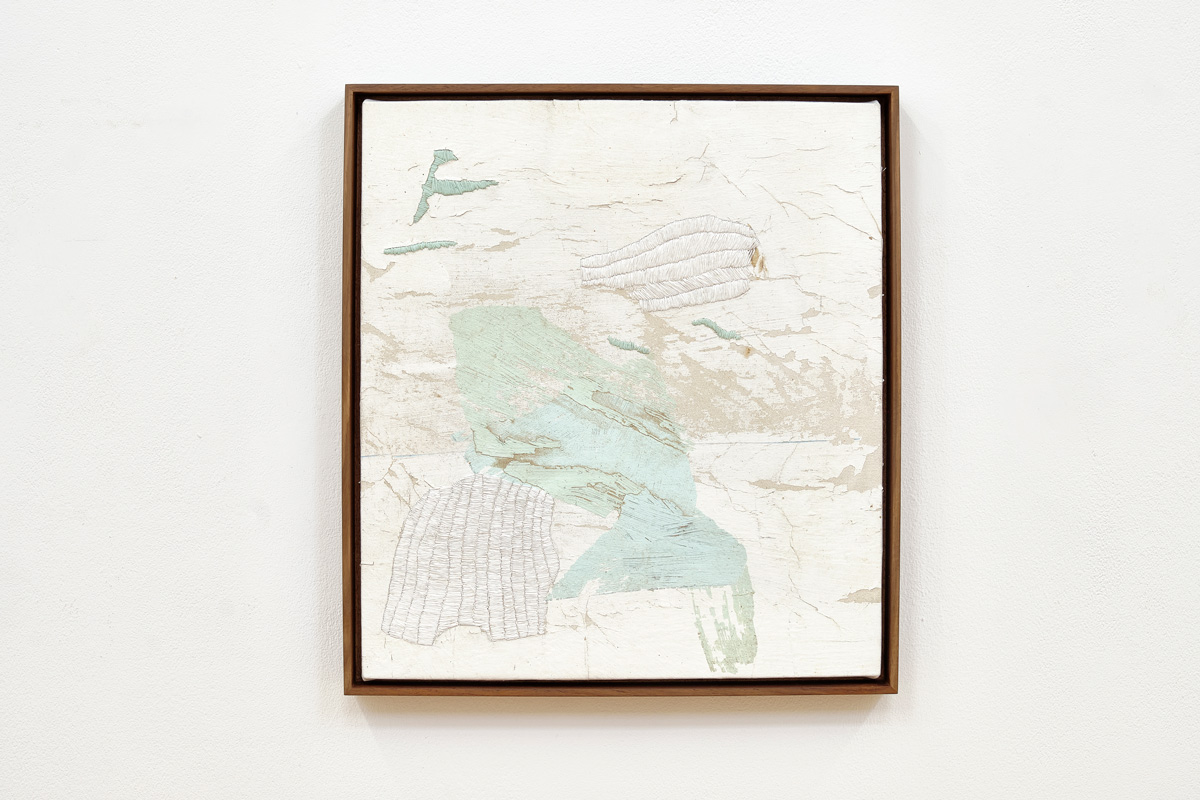

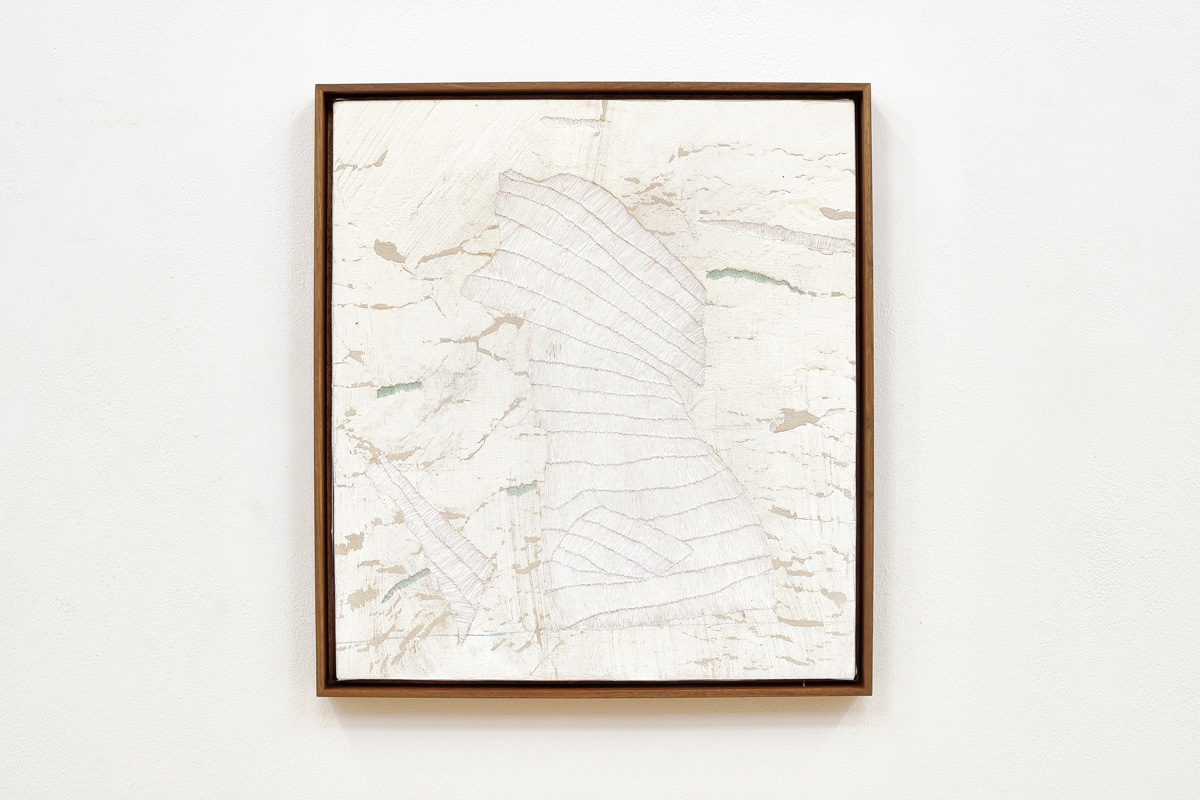
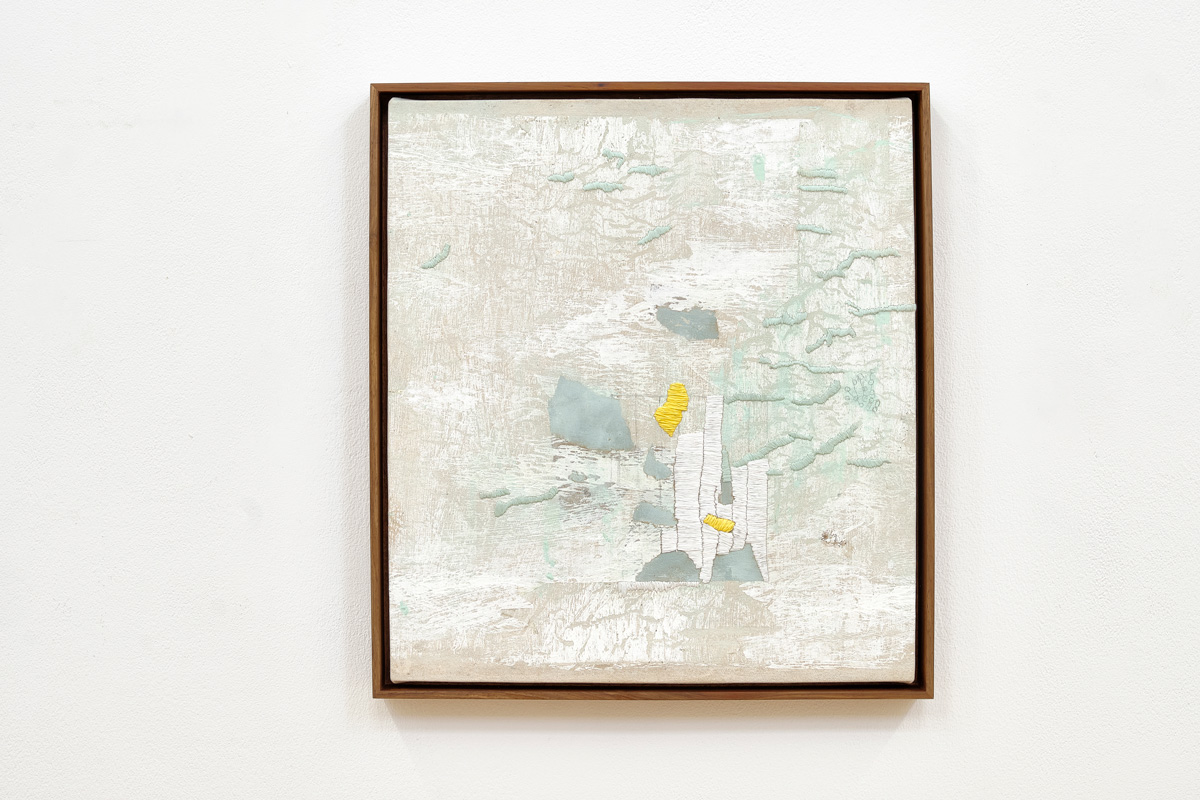
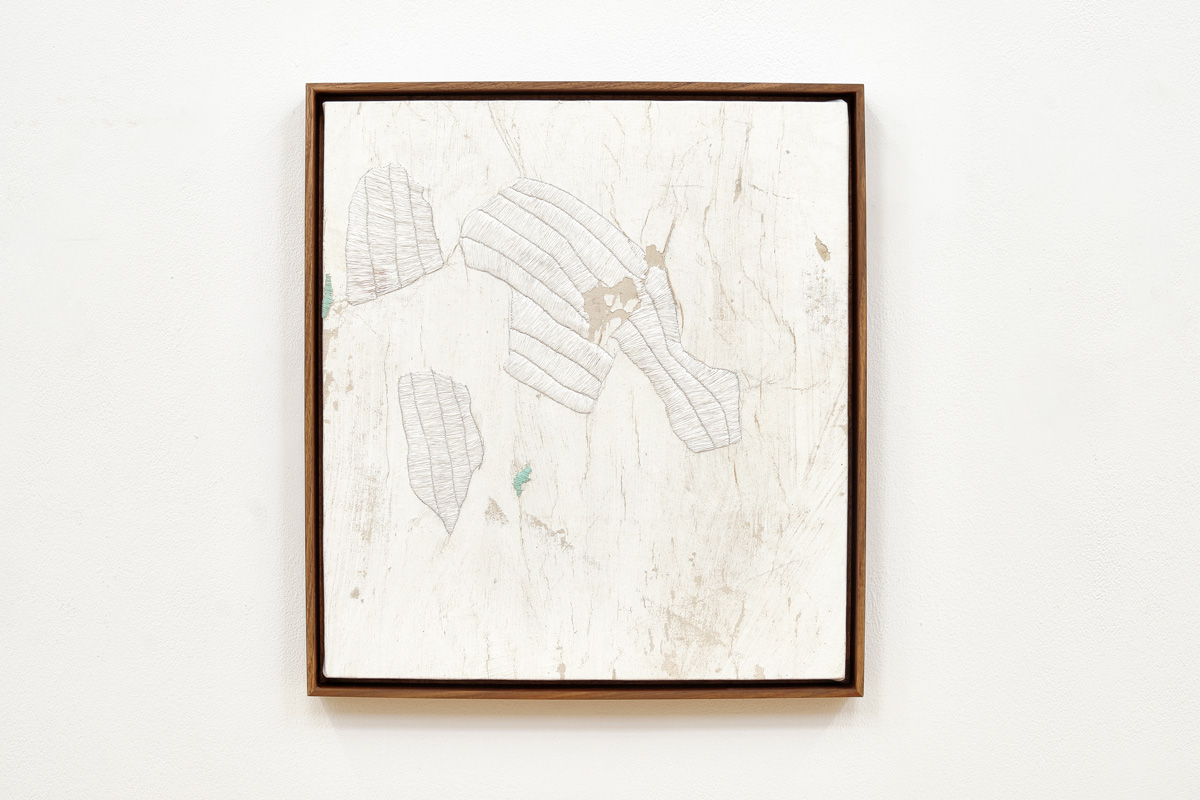

failure (to cohere)
Text by Vusi Nkomo
The profound stakes of Asemahle Ntlonti’s practice point to a symbiosis between a fundamental failure and a specific structure of domination that inaugurates our global modernity and anticipates our current catastrophe. For Ntlonti, the violence that founds this order lingers within the scars marking the surface of this land. This naked force, in Orlando Patterson’s words, is constitutively an “…ontological first moment—or a point of paradigmatic origin”, to borrow from theorist Frank Wilderson in his essay Biko and the Problematic of Presence (2008). Perhaps it is this prior-ness that perplexes: how can something so essential and foundational escape all the modes of inquiry that seek to render it conceptually coherent, that is, sayable and thinkable?
Ntlonti’s work, which spans across painting, performance, sculpture and sound, is preoccupied with structural impossibility and limit. What consistently appears as cracks in the composition, we might read as the woundedness of the ‘pained’ landscapes against the (im)possibility of repair. Ntlonti’s abstraction hints at the consistency in the violence of the structure that displaces, dislocates and dispossesses at all levels, including corporeal, political, spiritual, psycho-social, and territorial. Through wetting and scrubbing, threading and transferring, Ntlonti labours to aerially reveal (and conceal) a ‘body of land’ punctuated by marks, suggestive of violently whirling winds that rummage the surface. There is a productive tension between the scrubbed thin layer of painterly medium and the metaphorical heaviness of the blobs of thread that give the work a three-dimensionality. These strategies of peeling away and stitching evident in the artist’s cartographic forms, realised in what she calls “shy colours”1, earthy browns, pinks, dull whites and patches of blues, accentuate the sense of precarity and structural vulnerability so central in Ntlonti’s conceptual concerns.
A connection can be drawn between this precarity (that is as ontological as it is territorial) and what the artist calls “isingqala”2, a state of being that defies any easy definitional translation. This condition can be thought of as a deep sense of sorrow or the near-permanence of grief that grips and overwhelms the body. It is the vibrational and sonic properties of isingqala that could account for the tear in the land(scape), and the flesh, that has become a signature in the visual vocabulary of the artist. Isingqala signifies the afterlife of the catastrophe, the “paradigmatic origin” whose effect reverberates through our contemporary present. Ntlonti’s attention to the physicality of the Black domestic space that informs her choice of and approach to materials, in both its precarity and intramural (im)possibility, attests to the manner in which the violent tearing (of the flesh and land), constitutive of the anti-black modern order, and the repair-healing are concurrent modes of being in the world.
1 In a private conversation with the artist on the 26th May, 2023.
2 Also in a private conversation with the artist on the 26th May, 2023.
Works cited:
Abdur-Rahman, Aliyyah I., “Black Grotesquerie”, in American Literary History 0.0 (2017), 1-22.
Felstiner, John, Paul Celan: poet, survivor, Jew. New Haven and London: Yale University Press (1995).
Wilderson, Frank B. III, “Biko and the Problematic of Presence”, in Biko lives: Contesting the legacies of Steve Biko, ed. Andile Mngxitama, Amanda Alexander, and Nigel C. Gibson. New York: Palgrave Macmillan (2008), 95-114.
Wilderson, Frank B. III, Red, White and Black: Cinema and the structure of U.S Antagonisms. Durham & London: Duke university Press (2010).
Exhibition press:
Nkomo, V. Izonzobila: A tear in the world. Mail & Guardian, published 10 February 2024.
Text by Vusi Nkomo
There was earth inside them, and they dug.
— Paul Celan, Paul Celan: poet, survivor, Jew
. . .the sites and labors of loss might constitute. . .freedom’s proper domain (19)
— Aliyyah I. Abdur-Rahman, Black Grotesquerie
[W]e need a new language of abstraction to explain this horror.— Frank B.Wilderson, III, Red, White & Black: Cinema and the Structure of U.S. Antagonisms
The profound stakes of Asemahle Ntlonti’s practice point to a symbiosis between a fundamental failure and a specific structure of domination that inaugurates our global modernity and anticipates our current catastrophe. For Ntlonti, the violence that founds this order lingers within the scars marking the surface of this land. This naked force, in Orlando Patterson’s words, is constitutively an “…ontological first moment—or a point of paradigmatic origin”, to borrow from theorist Frank Wilderson in his essay Biko and the Problematic of Presence (2008). Perhaps it is this prior-ness that perplexes: how can something so essential and foundational escape all the modes of inquiry that seek to render it conceptually coherent, that is, sayable and thinkable?
Ntlonti’s work, which spans across painting, performance, sculpture and sound, is preoccupied with structural impossibility and limit. What consistently appears as cracks in the composition, we might read as the woundedness of the ‘pained’ landscapes against the (im)possibility of repair. Ntlonti’s abstraction hints at the consistency in the violence of the structure that displaces, dislocates and dispossesses at all levels, including corporeal, political, spiritual, psycho-social, and territorial. Through wetting and scrubbing, threading and transferring, Ntlonti labours to aerially reveal (and conceal) a ‘body of land’ punctuated by marks, suggestive of violently whirling winds that rummage the surface. There is a productive tension between the scrubbed thin layer of painterly medium and the metaphorical heaviness of the blobs of thread that give the work a three-dimensionality. These strategies of peeling away and stitching evident in the artist’s cartographic forms, realised in what she calls “shy colours”1, earthy browns, pinks, dull whites and patches of blues, accentuate the sense of precarity and structural vulnerability so central in Ntlonti’s conceptual concerns.
A connection can be drawn between this precarity (that is as ontological as it is territorial) and what the artist calls “isingqala”2, a state of being that defies any easy definitional translation. This condition can be thought of as a deep sense of sorrow or the near-permanence of grief that grips and overwhelms the body. It is the vibrational and sonic properties of isingqala that could account for the tear in the land(scape), and the flesh, that has become a signature in the visual vocabulary of the artist. Isingqala signifies the afterlife of the catastrophe, the “paradigmatic origin” whose effect reverberates through our contemporary present. Ntlonti’s attention to the physicality of the Black domestic space that informs her choice of and approach to materials, in both its precarity and intramural (im)possibility, attests to the manner in which the violent tearing (of the flesh and land), constitutive of the anti-black modern order, and the repair-healing are concurrent modes of being in the world.
1 In a private conversation with the artist on the 26th May, 2023.
2 Also in a private conversation with the artist on the 26th May, 2023.
Works cited:
Abdur-Rahman, Aliyyah I., “Black Grotesquerie”, in American Literary History 0.0 (2017), 1-22.
Felstiner, John, Paul Celan: poet, survivor, Jew. New Haven and London: Yale University Press (1995).
Wilderson, Frank B. III, “Biko and the Problematic of Presence”, in Biko lives: Contesting the legacies of Steve Biko, ed. Andile Mngxitama, Amanda Alexander, and Nigel C. Gibson. New York: Palgrave Macmillan (2008), 95-114.
Wilderson, Frank B. III, Red, White and Black: Cinema and the structure of U.S Antagonisms. Durham & London: Duke university Press (2010).
Exhibition press:
Nkomo, V. Izonzobila: A tear in the world. Mail & Guardian, published 10 February 2024.